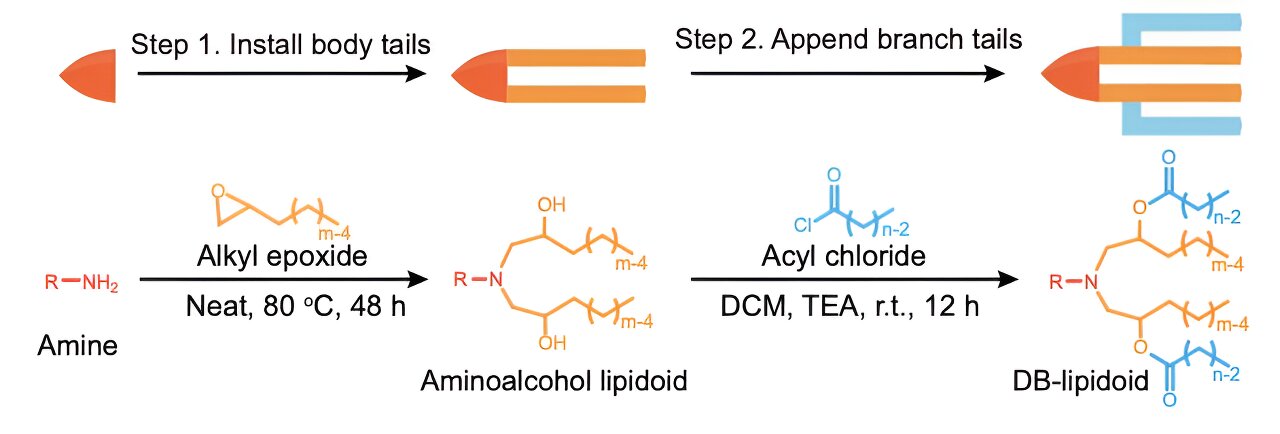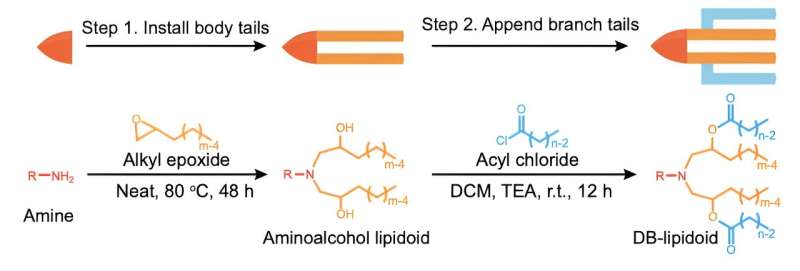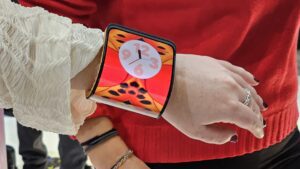

Inspired by the design of space shuttles, Penn Engineering researchers have invented a new way to synthesize a key component of lipid nanoparticles (LNPs), the revolutionary delivery vehicle for mRNA treatments including the Pfizer-BioNTech and Moderna COVID-19 vaccines, simplifying the manufacture of LNPs while boosting their efficacy at delivering mRNA to cells for medicinal purposes.
In a paper in Nature Communications, Michael J. Mitchell, Associate Professor in the Department of Bioengineering, describes a new way to synthesize ionizable lipidoids, key chemical components of LNPs that help protect and deliver medicinal payloads. For this paper, Mitchell and his co-authors tested delivery of an mRNA drug for treating obesity and gene-editing tools for treating genetic disease.
Previous experiments have shown that lipidoids with branched tails perform better at delivering mRNA to cells, but the methods for creating these molecules are time- and cost-intensive. “We offer a novel construction strategy for rapid and cost-efficient synthesis of these lipidoids,” says Xuexiang Han, a postdoctoral student in the Mitchell Lab and the paper’s co-first author.
The method involves combining three chemicals: an amine “head,” two alkyl epoxide “tails” and, finally, two acyl chloride “branched tails.” The completed lipidoid’s resemblance to a space shuttle strapped to two booster rockets is not coincidental: in college, recalls Han, a documentary about the space shuttle left him impressed with the design of solid rocket boosters that enabled the shuttle to enter orbit. “I figured that we could append two branch tails as ‘boosters’ into the lipidoid to promote the delivery of mRNA,” says Han.
Indeed, the addition of the branched tails led to a striking increase in the ability of LNPs equipped with the new lipidoid to deliver mRNA to target cells, much like a rocket whose boosters allow it to more easily penetrate the atmosphere. “We saw a dramatic increase of a hormone that regulates metabolism to target cells after delivering mRNA using these lipidoids, which is really exciting when you consider it as a way to treat obesity,” says Mitchell.
More information:
Xuexiang Han et al, In situ combinatorial synthesis of degradable branched lipidoids for systemic delivery of mRNA therapeutics and gene editors, Nature Communications (2024). DOI: 10.1038/s41467-024-45537-z
Provided by
University of Pennsylvania
Citation:
New molecules, inspired by space shuttles, advance lipid nanoparticle delivery for weight control (2024, February 26)
retrieved 26 February 2024
from https://phys.org/news/2024-02-molecules-space-shuttles-advance-lipid.html
This document is subject to copyright. Apart from any fair dealing for the purpose of private study or research, no
part may be reproduced without the written permission. The content is provided for information purposes only.

